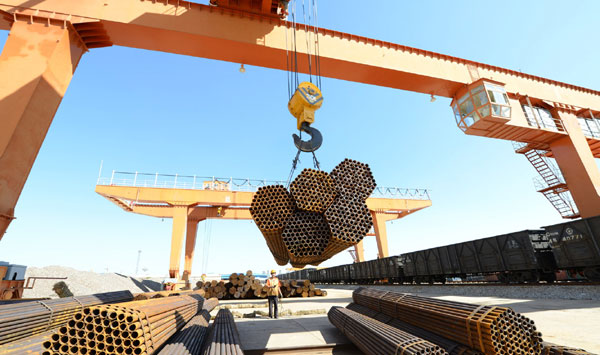|

|
"I wasn't really very grateful to the railway for the additional income, though, because that was a one-in-a-thousand event. Usually, the delays resulted in lost profit and credit"
improving efficiency and providing a better service. The reform was part of a plan to transform the railway freight sector into a modern logistics industry, one characterized by easier, faster service and lower prices.
A month after the reform, freight volumes began to rise, turning around years of declines. Kunming Railway Bureau alone transported 1,061 freight cars during the second half of June, an increase of 9.2 percent from the first two weeks of the month. Things continued to improve in July, when an average of 2,485 freight cars traveled by rail every day, a month-on-month increase of 17 percent, according to the bureau.
Having been given a taste of the new order, many logistics companies hoped to see the reform improve the service permanently, as predicted by transportation experts.
Freight transport has contributed a huge amount to railway revenues for many decades, but the volume of rail freight shrank in the second half of last year as a consequence of China's economic slowdown and fierce competition from air carriers and trucking companies, according to a source with the Kunming Railway Bureau, who spoke on condition of anonymity.
From January to April, the volume of rail freight nationwide dropped 1.5 percent compared with the same period in 2012, but the total revenue of the Chinese logistics industry rose 9.8 percent from the previous year, according to the China Federation of Logistics & Purchasing.
In March, the former Ministry of Railways was split into commercial and administrative arms, namely China Railway Corp and the State Railways Administration, which was merged with the Ministry of Transport. The CRC took on the former ministry's debts, which totaled 2.79 trillion yuan, according to a ministry audit in 2012. The optimum time for CRC to repay the debt, estimated to arrive in four or five years, also pushed the corporation to carry out market-oriented reforms to improve profitability.
Compared with other methods of freight transport, such as air or road, the lower price charged by the railway gave it a unique advantage. Rail freight is 5 to 10 yuan cheaper per metric ton than road haulage, meaning a logistics company that carries 200,000 tons of freight annually can reduce its costs by at least 1 million yuan.
|
|
However, logistics companies complained that the cost advantage had been undermined by other charges, such as service fees, and the complicated booking procedures prior to the reform.
During the era of the planned economy, rail transport was a scarce resource and businesses had to request, or sometimes even plead, for freight to be transported. Moreover, the authorities charged a service fee of 10 to 30 yuan for each ton of freight carried, plus storage fees if clients didn't claim their goods on schedule.
"The railway was called 'Big Brother' in the transport industry, as it had a huge nationwide network. Therefore, all the goods had to be clearly listed in our paperwork. But usually only about 50 percent of the requested freight would be approved for transportation."